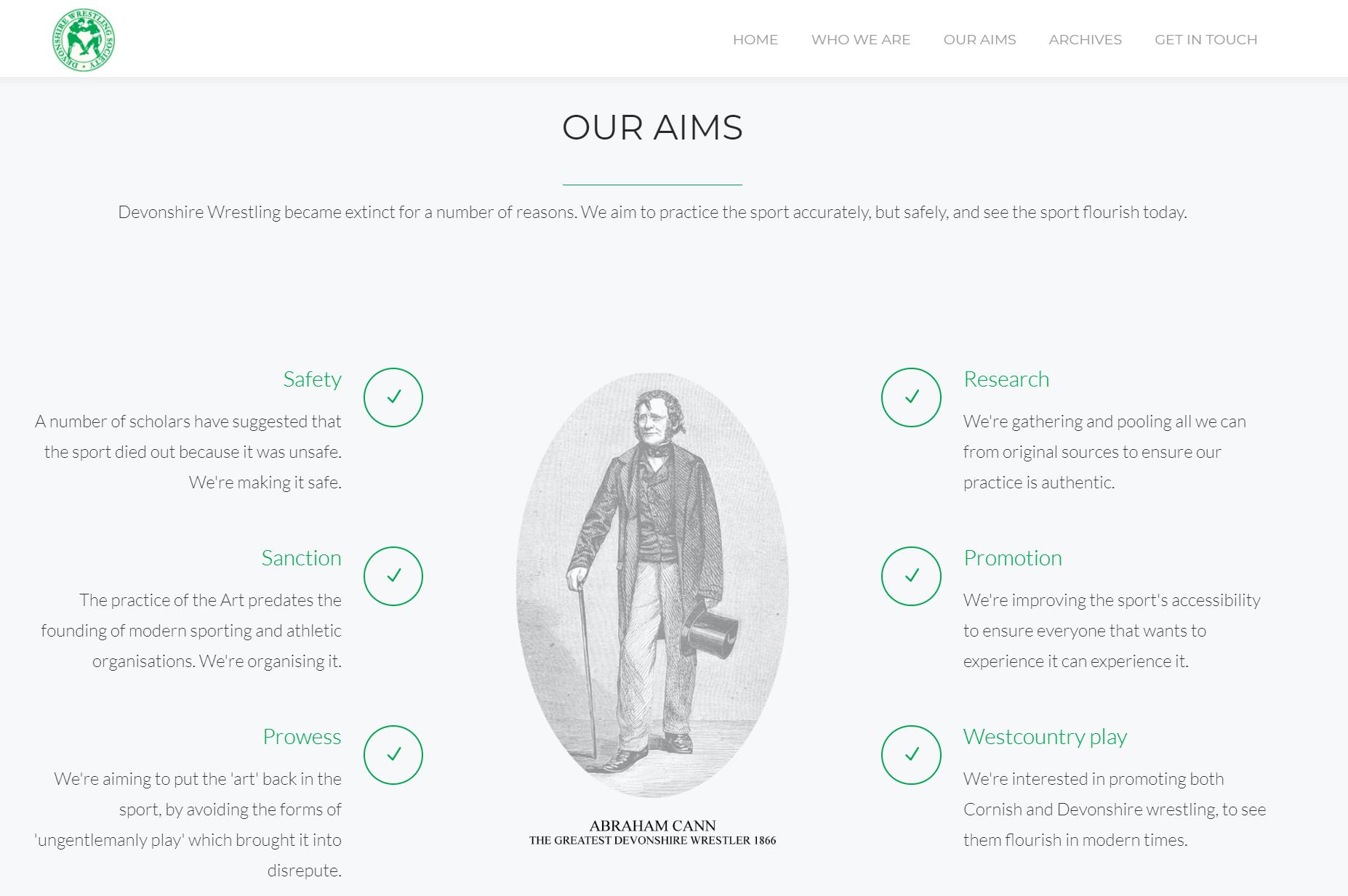Experiencing the past
When my friends and family each pulled on a canvas jacket, and stood in a field outside Honiton in 2014, it was the first time anyone had wrestled in the Devonshire style in over 150 years.
When my friends and family each pulled on a canvas jacket, and stood in a field outside Honiton in 2014, it was the first time anyone had wrestled in the Devonshire style in over 150 years.
After many, many years of lamenting the loss of Devonshire wrestling and often declaring ‘someone should bring it back’, we decided to ‘bite-the-bullet’ and do it.
We called ourselves ‘The Devonshire Wrestling Society‘ in tribute to the ‘Cornwall and Devonshire Wrestling Society’ which actively maintained the sport in the 19th century.
There were a vast amount of information which was missing, particularly about the practice of wrestling as a local sport. Researching sources, digging into local archives and gathering info from local museums, we collected a substantial archive of sources.
1. Appeal: to define the meaning and the reason, as well as the unique selling propositions of the sport –
what makes it unique, what characteristics define it, what’s its charm? To portray it using a high level
of professionalism, using appealing uniforms, role-model instructors, beautiful artwork and compelling
web design. This is the Brand of the sport. What it stands for, why it is still practiced etc. The visual
manifestation of its inward significance.
2. Publicity: to create content which is engaging, fascinating, intriguing, and empowering to draw in an
audience with the story of the Art, spreading across channels and within the locations which the target
audience frequent. This is to distribute owned content via borrowed platforms.
a. Martial Arts media: such as magazines, websites, blogs etc.
b. Non Martial Arts media: such as local history magazines, national newspapers, social media
etc.
3. Resources production: To create a catalogue of resources this means that the sport is not tied to
‘people’, but simply to ‘sources of information’. Creating content and delivering it via brochures,
leaflets, books, web sites etc. Potential to create a Virtual Learning Environment.
4. Curriculum: Create a syllabus including which techniques and what level of proficiency is required to
define a particular level of experience.
5. An Accessible Artefact of the Art: Invention of an inexpensive jacket, easily or widely sourced which must
a. Facilitate the behaviours of the sport (such as rolling the jacket)
b. To be tough enough to stand the pressures it will undergo on a regular basis
c. To be reserved and respectful of a modern practitioner’s modesty
6. To create a rule-set, based upon sanctioned safety but which favour the optimum operation of the
sport. Also to facilitate access to reliable safety equipment meeting modern personal protection laws.

